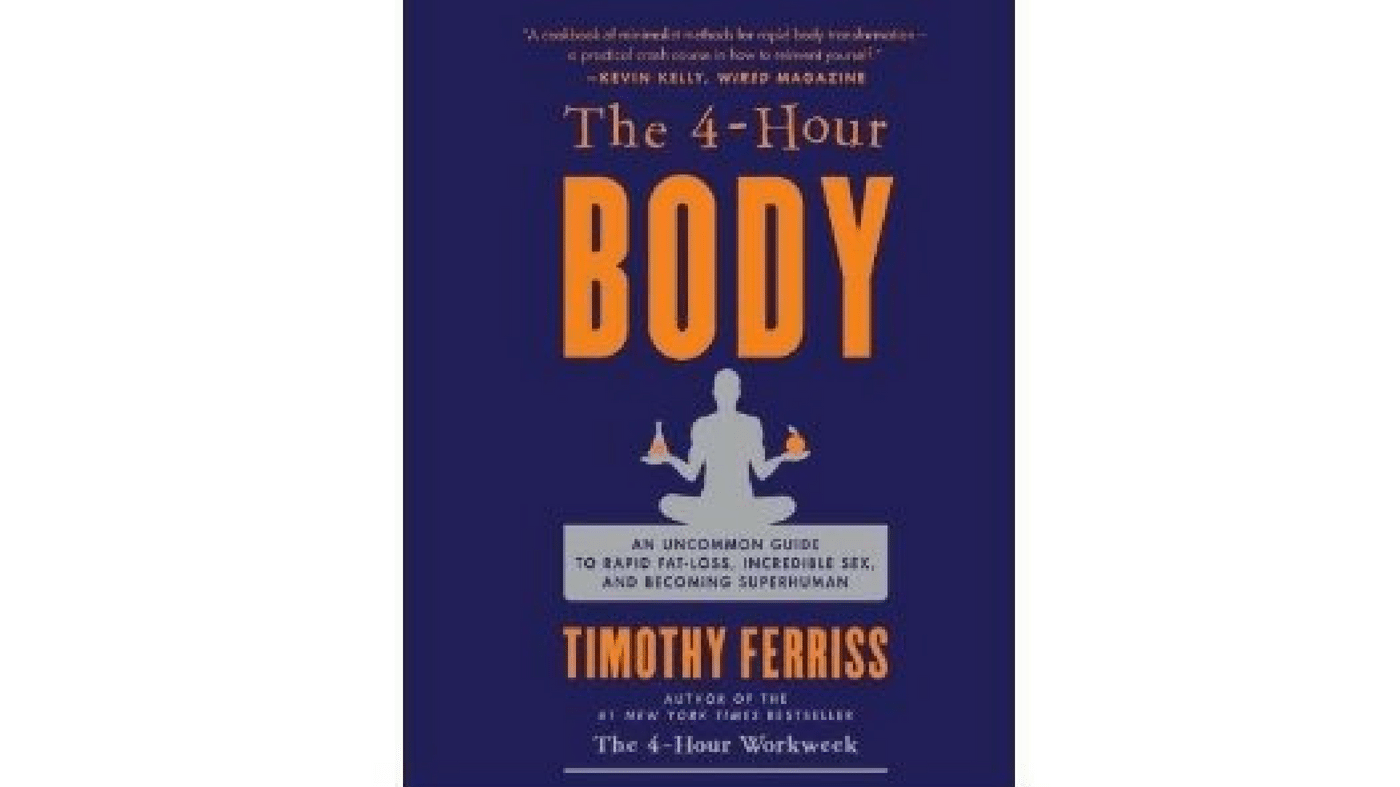In a world increasingly obsessed with quick fixes and instant gratification, “The 4-Hour Body” by Tim Ferriss stands as a provocative testament to a new paradigm of wellness. It deviates from traditional fitness literature not merely through its audacious promises but by intertwining an eclectic mash of scientific research, anecdotal experiences, and practical workouts. This review examines the multifaceted dimensions of the book and the unique content readers can expect.
First and foremost, readers are introduced to the concept of “lifestyle design,” a term Ferriss popularized in his earlier work. This notion propels the narrative, asserting that one does not need to embody the archetype of a disciplined athlete to achieve robust health and a desirable physique. Instead, Ferriss encourages exploring unconventional methods that define personal success. Here, the book dramatically shifts the dialogue surrounding fitness, injecting a level of accessibility—an ethos that anyone can apply to their routine.
Each section of the book offers a treasure trove of information ranging from weight loss to muscle gain, sexual health, and even sleep optimization. One cannot ignore the sheer lack of encumbrance in Ferriss’s approach. For those yearning for a newfound physique, “The 4-Hour Body” delivers actionable advice in digestible segments—the hallmark of its charm. For instance, the “Slow Carb Diet,” heralded as one of the most transformative aspects of the book, is meticulously outlined. Readers discover specific meals, ingredient lists, and even a cheat day, thus fostering a sense of engagement.
Transitioning to body transformation techniques, the book delves into the world of exercise, unapologetically prescribing minimal over maximal effort. Tim Ferriss introduces an exhilarating approach he dubs the “Minimum Effective Dose” (MED), encouraging readers to embrace efficiency over intensity. This principle dictates that a small input can yield significant outputs. Techniques like the “Occam’s Protocol,” which centralizes strength training and leverages the power of compound movements, become accessible through his uncomplicated descriptions. Readers are empowered to break free from the rigorous hours at the gym, significantly altering their outlook on physical exertion.
Moreover, Ferriss doesn’t shy away from discussing under-explored yet imperative topics—sleep and sex. He offers pragmatic solutions grounded in both theory and experimentation, transforming potentially esoteric subjects into relatable content. The section focusing on sleep hygiene underscores the importance of quality rest for holistic health. By presenting unconventional tactics to enhance sleep quality, such as polyphasic sleep schedules, readers find themselves equipped with fresh methodologies to obtain restorative slumber.
The provocative nature of “The 4-Hour Body” continues as readers navigate through chapters on sexual health and enhancement. Ferriss widens the lens to view intimacy through a lens of scientific rigor, backing up his claims with evidence. The book tackles the intricacies of sexual satisfaction, addressing both physiological and psychological aspects. This unvarnished exploration speaks to an audience that yearns for authenticity and depth in health literature, an area often left uncharted.
Ferriss is not merely a presenter of information; he serves as a curator of personal anecdotes, juxtaposing his experiences with those of experts. This narrative style creates an engaging tapestry through which readers can process information. The stories serve dual purposes: they enhance relatability and bolster credibility. Readers will find themselves captivated by his journey of trial and error, from the trials of grappling with his own body image to breakthroughs in behavior modification.
Amidst the dense amalgamation of content, the book’s self-experimentation ethos rings most resoundingly. Ferriss meticulously documents methodologies of self-testing—be it for diet, workouts, or even supplements. He conducts an array of experiments that demonstrate a commitment to evidence-based conclusions yet embraces the idiosyncratic nature of personal health journeys. This helps emphasize the book’s overarching message: there exists no one-size-fits-all solution. Encouraging readers to adopt the mindset of a scientific skeptic, Ferriss invites exploration and customization of one’s health protocols.
But what truly elevates “The 4-Hour Body” is Ferriss’s flair for storytelling, wherein even the most pedestrian topics become thrilling narratives. His enthusiasm is palpable, engaging the reader with humor and wit. The writing style maintains fluidity, ensuring that one chapter flows seamlessly into the next. Whether you’re glued to the weight-loss strategies in one chapter or riveted by sleep optimization techniques in another, the book possesses an energy that’s both invigorating and motivational.
In summation, “The 4-Hour Body” is an unparalleled examination of health, fitness, and well-being packaged in an unconventional format. Readers embark on a journey filled with diverse perspectives and innovative ideas, all while being encouraged to take charge of their personal health narrative. The content intersperses scientific rigor with real-world application, making it an indispensable resource for anyone aspiring to refine their lifestyle.
Ultimately, Tim Ferriss’s magnum opus challenges readers to rethink preconceived notions about health and fitness, broadening the horizons of wellness and introducing a world of possibilities. Whether one seeks to shed pounds or gain muscle, the insights gleaned from “The 4-Hour Body” provide ample fodder to inspire awe and reflect on one’s health journey. Excitement brews as readers delve into the actionable strategies Ferriss offers, embodying a new wave of health consciousness.
